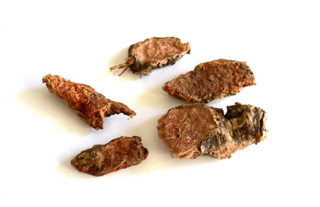about us | incense and oil | our products | healing | ingredients | types | retailers | order | contact
Incense Ingredients
There are various herbs, plants and flowers used in making incense, depending on its use and formulation. In fact, these are the same herbs that are used for medicinal healing purposes in Tibetan medicine. These materials are often granulated before burning or for further processing. For incense sticks making, incense ingredients are mixed into a paste with snowland water and ‘extruded’ out into sticks using a conventional nozzle like hand tool.
Some of the herbs used are considered quite valuable due to its availability and healing properties. For example, ingredients like Saffron, Special Grade White Sandalwood, Myrobalan, Amber, Roseroot, Nutmeg etc are used in our Tibetan Incense series, making it an incense of high quality and grade which gives off non-harmful smoke.
Essential oils and perfumes are sometimes added in making incense but the resulting incense is usually considered inferior in quality compared to incense made of pure herbs, plants and flowers. Incense made primarily from essential oils are mainly used for pleasure and burned for their fragrances alone. Essential oil based incense is usually cheaper than original material/herbal incense. This is the reason why all our incense is free from essential oil, perfumes, artificial additives (e.g. fragrances) and chemicals. The following are some ingredients used in incense making and their properties.
Myrobalan

The myrobalan trees grow in many Asiatic regions including Malaysia and northern India. The Myrobalan is called arura in Tibetan and it has a central place in Tibetan medicine. There are several different varieties of myrobalan, with the ‘vanquishing myrobalan’ symbolising the perfect remedy in rGyudbzhi or 4 Tantras. It was able to cure all illnesses arising from rLung, mkhrispa and badkan disorders, as well as hot and cold illnesses. The ‘golden myrobalan’ is the closest to the ‘vanquishing myrobalan’ with one of the taste spheres (salty) missing. In general, the myrobalans are considered to aid digestion, and have a life-enhancing, nourishing and strengthening effect on the body.
White Sandalwood

White Sandalwood is found from the Indian peninsula to Malaysia. Both the wood and oil are used in Tibetan Medicine. The sandalwood tree is called tsandan dmarpo in Tibetan. The taste of the substance is astringent, the active force is cooling. Thus, it is used for treating hot illnesses. White sandalwood is the main element of several remedies prescribed for inflammations and infections. Sandalwood scent is believed to transform one's desires and maintain a person's alertness while in meditation.
Nutmeg

The nutmegs trees are indigenous to tropical Southeast Asia and Australasia. The nutmegs are derived from the peach-type fruits of the trees. The seed of the fruits are often mistaken as a ‘nut’. The seeds are dried and cracked opened to get the kernels, which are used for various purposes. Nutmeg is called dzati in Tibetan. In Tibetan medicine, the fruits and the oil are used and being made into pills and massage oil respectively. Its taste is sharp and the active force is oily. It is used to counteract rlung disorders and stimulates digestion.
Saffron
Saffron originates from Asia Minor. It is grown in Mediterranean Countries, Russia and India, at altitudes above 1,600m. Saffron, which has for decades been the world's most expensive spice by weight, is native to Southwest Asia. It is derived from the flower of the saffron crocus. The flower has three stigmas with the stalk connecting the stigmas to the rest of the plant. Saffron types are graded by quality according to characteristics such as colour, taste, and fragrance content.
Saffron is called khachegurgum in Tibetan. In India, Kashmir, the saffron is regarded as the best quality. It has taste spheres of sweet and bitter, and the active forces of cool. It is the main constituent of a number of formulas prescribed for different ailments including ‘fever’ illnesses, liver diseases, and for sealing channels e.g. stopping blood flow.
Roseroot

Roseroot or commonly known as Arctic Root or Golden Root is a plant that grows in cold regions of the world including Tibet. It thrives in cool, humid coastal and mountainous climates. Roseroot is very effective for improving mood and alleviating depression. It has taste spheres of sweet and active forces of hot. Research shows that it improves both physical and mental performance, reduces fatigue, and prevents high altitude sickness.
Tibetan Incense Herbs and Plants Ingredients (Made In Tibet)
The incense ingredients that goes into your Tibetan incense is important to ensure that you have the best quality scent to enjoy healing benefits. Tibetan incense is made by several incense makers from different countries, with rising trends from Asia. But the main reasons why Tibet remains the best place for incense making are its climate and condition.
Tibet has the best quality water which flows from the snowlands and the unpolluted environment at high altitudes for natural cultivation of herbs, plant and flowers required for incense making.
|